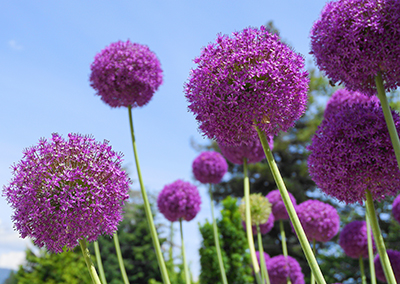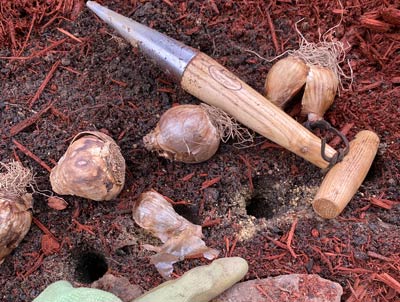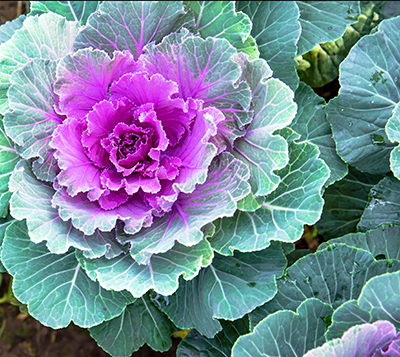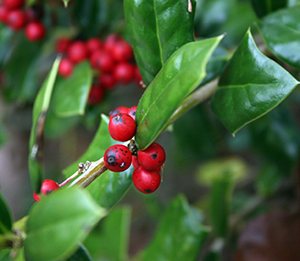Arkansas Fall Gardening Tips
Fast Facts
- Fall is a great time for planting trees and shrubs.
- Watering is still important, especially after a dry summer.
- Be careful not to prune broadleaf evergreens too severely.
- Pull a soil sample now to get the best results during growing season.
- Keep a close eye on insects and diseases on all fall vegetable plants.
- Freshly collected seed is best stored in a paper bag or envelope until thoroughly dried, and then placed in tightly sealed freezer bag or glass jar to store in the freezer.
- When planting container plants this fall, remember to disturb or “open up” the plants’ root ball. This encourages root development into existing soil which reduces the need for watering and ultimately offers a better chance of survival.
Tips for Indoor plants
- To prepare tropical plants (including houseplants) for the move indoors, begin to reduce the amount of light on them by moving them to a less sunny area now and then to full shade by mid-October.
- Before bringing houseplants back inside inspect closely for insect pests such as aphids, spider mites, scale, and whitefly. Treat or dispose of infested plants to protect other houseplants.
- Houseplants should be brought indoors at least one month before the heat is normally turned on.
- Prune back rampant growth and protruding roots.
- You can get last year’s poinsettia to flower by placing it in total uninterrupted darkness for 15 hours a day, starting the last week of the month and continuing until colored bracts appear. Give them plenty of sunlight during the day and fertilize every other week with a soluble houseplant fertilizer until bracts begin showing color.
- In November reduce or eliminate fertilizing houseplants until spring.
Tips for Planting Bulbs

- Local garden centers start carrying spring flowering bulbs in September. Plant them now except tulips.
- Tulips should be kept in a cool, dark place and planted in late October or November. When planted sooner they will often grow and sprout to the surface this fall.
- As you shop the bulb aisle this fall, check out the alliums. Nearly all alliums, particularly those with large bulbs, grow best in free-draining soil. If you have wet clay, you’ll have to create a raised bed or amend the existing soil with loads of organic matter to improve drainage.
- Mix a balanced fertilizer into the planting soil and set the bulbs three times the depth of the bulb width.
- Mulch the area and be prepared to cover the bulbs with some type of wire mesh material if voles and squirrels have been a problem in the past.
- For best results, plant bulbs in a sunny spot, in well-drained soil.
How do I plant bulbs?

Choose a site with good drainage–especially in the winter. Standing water and bulbs are not a good combination. When planting bulbs, grouping them together in clusters will make a stronger impact than a single row of bulbs.
When planting your bulbs, you can dig individual holes for each bulb (which can be difficult in our rocky soils) or mass plant. It is often easier to dig up a larger planting area, scatter your bulbs in, and then fill the soil back in.
A general rule of planting depth is to plant two to three times the size of the bulb, deep in the ground. Small bulbs are planted shallow, while big bulbs need a deeper hole. You can even layer different bulbs in the same planting area.
Download the fall bulbs tip sheet
Get tips for maintaining and storing summer bulbs
Fall Garden Care Monthly Checklists
September
- Cultivate strawberry beds and make the late summer fertilizer application per your soil test. After the strawberry bed is cleaned and fertilized, mulch around and under strawberries to prevent fall weeds from germinating.
- Give tomato plants one last feeding. Compost tea, fish emulsion, or usual garden fertilizer should give them the extra energy needed to make that final push at the end of the season. For larger fruited types, pinching off small green tomatoes and any new flowers will channel the plant’s energy into ripening the remaining full-size fruit.
- Plant transplants of cabbage, cauliflower, broccoli, and Brussels sprouts, this month for harvest this early winter. Plant seeds of lettuce, spinach, radish, turnips, etc. later this month and again early to mid-September for fresh greens beyond first frost.
- Sow seeds of radish, lettuce, spinach and other greens in a cold frame to prolong fall harvests well after the first frost.
- Divide and replant Egyptian (top-setting) onions this month.
- Dig herbs such as parsley, rosemary, chives, thyme and marjoram and place in pots now for growing indoors this winter. Place transplanted plants outdoors in an area with a lot of indirect sunlight and then move indoors in a sunny window in November before frost.
- Feed mums, asters, and other fall-blooming perennials now for the last time.
- Divide perennials, especially spring bloomers such as peonies. Peonies are shutting down now and transplanting at this time will allow ample time for roots to get re-established in its new location. Be careful not to plant any deeper than it is growing now. Enrich the soil with peat moss or compost before replanting.
- Biannual flowers can be sown in early fall for flowering next year. Sow seeds of hollyhocks, foxgloves, sweet William, money plant (lunarian), forget-me-nots (myosotis), purple coneflower, larkspur, and poppies. You can direct sow these where they will flower, or you can start in a seed flat for transplanting later. Better to direct sow the hollyhocks as they are tap-rooted and can be difficult to transplant successfully.
- Keep deadheading plants such as zinnia and cosmos to ensure that they continue to flower.
- Take cuttings of coleus this month to provide vigorous plants for overwintering indoors.
- Lift crowded gladioli when their leaves yellow. Cure in an airy place until dry before husking.
October

- Garden Clean-up - half the tomato disease battle in a vegetable garden is sanitation. As tomatoes end their production remove them from the garden and take them to a landfill. Many diseases will over-winter on old infected leaves and stems.
- Plant garlic now for harvest next summer. Purchase garlic sold specifically for planting, or buy organic garlic. Commercial, non-organic, supermarket garlic may have been treated to inhibit sprouting. Break the garlic head into individual cloves, keeping the largest ones for planting. Use the smaller cloves for cooking. Plant garlic cloves about 3 inches apart with the pointed side up. Try some different varieties to see which ones you prefer. Mulch the bed well with straw.
- Clean up perennial beds and replenish mulch. You might consider leaving the flower heads on sunflowers, coneflowers, coreopsis, and black-eyed Susan to provide winter food for birds.
- Mums that are planted in the fall should be treated as an annual. They do not have enough time to become established and withstand our winter. Fall-planted asters, however, will typically do well for us planted now and can be left in the perennial flower border.
- Geraniums can be over-wintered in several ways. Entire plants can be brought inside and grown in a sunny window, or cuttings can be taken from existing plants. You can also take cuttings from other annuals like begonias, salvias, and coleus.
November

- Clean up the vegetable garden and reflect back on the growing season as to what varieties performed well and what didn't.
- Most cool-season vegetables will be able to tolerate temperatures to about 28 degrees without protection but will need to be covered if temperatures are lower or if it is a clear, still night. Overturned boxes, flower pots or small high tunnels can add the protection you need.
- Spinach planted early November will overwinter and be ready for first picking late March to early April. With cold frames/hot beds, you can harvest all winter long.
- Tidy up the asparagus bed. Cut off the tops of the plants to about 3-4 inches above the soil level. Weed and add a winter dressing of compost or aged manure to the bed.
- Use wood ashes around the vegetable garden, bulb beds, and around non-acid loving plants if soil pH is below 6.0. Apply sparingly at the rate of 0.5 cup per sq. ft.
- Strawberry beds need a cleaning as well. Mulch strawberry beds to prevent winter weeds, but be careful not to cover its green leaves and crown.
- Cut faded chrysanthemums and asters to 3 inches above ground. Mulch up around them like other perennials. Newly planted mums and asters will need winter watering occasionally.
- Cut back and apply mulch to herbaceous perennials after hard frost kills the top foliage. Do not compost foliage from plants that suffered from disease problems this season. Fall garden cleanup may result in a healthier garden next season by reducing disease spores and insect eggs, which overwinter in plant material.
- It is last call to dig caladium bulbs, dahlia tubers, elephant ear corms, and ornamental sweet potato tubers for winter storage. Dahlias and elephant ears can overwinter in place if they are heavily mulched. Once they are dug, air dry for a couple of weeks before wrapping and storing in a dry cool place.
- Clean and store garden and landscape tools. Coat with a light application of oil to prevent rusting.
Water Gardens
- To help prevent a buildup of decaying leaves in your water garden, which can result in dying fish and lead to other problems, place bird netting over your pond to keep fallen leaves out during the fall until all leaves have dropped.
- For shallow ponds, consider buying a stock tank heater. This will prevent the pond from freezing over completely during the winter.
- As the weather gets colder, slow down and stop feeding your fish. They cannot metabolize food easily during cold weather.